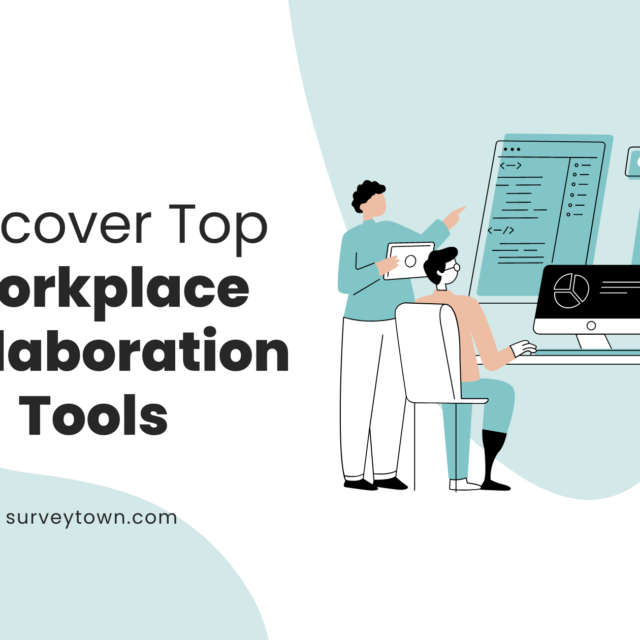Welcome to the digital era, where online employee onboarding revolutionizes success. It’s not just a process; it’s an empowering experience that propels new hires toward greatness from day one. By seamlessly integrating them into their roles, virtual onboarding ensures they feel valued, supported, and ready to conquer any challenge. Online onboarding excels at boosting engagement and retention. When employees truly connect with their company and understand how their contributions make a difference, they become unstoppable forces of motivation and dedication. Tailored virtual solutions foster belonging that ignites passion right from the start.
Click here for more helpful information about online employee onboarding!
Remote-friendly onboarding programs break down geographical barriers like never before. No matter where your team members are located – whether in different time zones or continents – technology effortlessly bridges the gap. Virtual platforms and innovative software provide consistent training and support for every employee, regardless of physical proximity.
In essence, grasping the significance of online employee onboarding is paramount for any organization striving to attract top talent while retaining invaluable team members. By investing in effective virtual onboarding processes, companies create an unforgettable first impression while laying a solid foundation for long-term growth.
Discover how you can overcome challenges in online employee onboarding by exploring our insightful blog below! We’ve got all the expert tips you need to ensure your program is nothing short of exceptional.
Overcoming Challenges in Online Employee Onboarding
Welcome to the digital age, where virtual onboarding has become an integral part of the employee experience. However, navigating this new territory is not without its hurdles. As experts in online employee onboarding, we understand the importance of identifying and addressing these challenges to ensure a smooth and successful transition for remote employees.
1. Building Connections in a Virtual World
One of the top obstacles faced during online employee onboarding is the lack of personal interaction that comes with traditional face-to-face onboarding. Without physical presence, it can be difficult for new hires to establish connections with their colleagues and truly feel like they are part of the team.
Let me paint you a picture: Imagine starting a new job remotely, never having met your coworkers in person. It can be quite challenging to build relationships and foster that sense of belonging when all interactions happen through video calls or instant messaging platforms.
2. Technical Glitches That Hinder Progress
Another common challenge encountered during online onboarding is technical issues. Poor internet connection, software glitches, or unfamiliarity with virtual tools can hinder effective communication and training sessions.
Here’s an example: Picture yourself trying to attend an important virtual training session only to encounter constant connectivity issues or struggle to navigate through complex software platforms. These technical difficulties can significantly impact productivity and engagement throughout the entire onboarding process.
3. Information Overload Made Manageable
Online employee onboarding often involves providing a wealth of information within a short period of time. This overload can overwhelm new hires, making it difficult for them to absorb everything effectively.
Consider this scenario: You receive numerous emails containing various documents, policies, procedures, and training materials all at once as part of your remote onboarding process. It becomes challenging to prioritize what needs immediate attention while ensuring nothing important gets overlooked.
To overcome these challenges in online employee onboarding:
- Foster virtual connections: Encourage regular video meetings between new hires and their team members or mentors to facilitate relationship-building. This will help create a sense of camaraderie even in a virtual setting.
- Provide technical support: Offer comprehensive guidance regarding the virtual tools used during the onboarding process and ensure dedicated IT support is available to address any technical issues promptly. This way, employees can focus on their work without being hindered by technology glitches.
- Chunk information: Break down the onboarding content into smaller, digestible modules or sessions to prevent information overload. Additionally, provide access to resources that new hires can refer back to as needed, ensuring they have all the necessary information at their fingertips.
Remember, overcoming these challenges requires a proactive approach and continuous improvement. By addressing these obstacles head-on, you can create a seamless virtual onboarding experience for your employees that sets them up for success from day one.

Expert Strategies for Successful Online Employee Onboarding
When it comes to virtual employee onboarding, organizations often face a myriad of challenges. However, with the right strategies and solutions at your disposal, these obstacles can be effectively tackled. In this section, we will provide you with expert advice on how to overcome each identified challenge and highlight the pivotal role that technology and software play in streamlining the entire onboarding process.
1. Lack of Personal Interaction
One of the top hurdles in online employee onboarding is the absence of personal interaction between new hires and their colleagues or managers. This lack of connection can hinder effective communication, relationship building, and a sense of belonging within the organization.
Solution: To conquer this challenge head-on, it is crucial for organizations to incorporate virtual team-building activities into their onboarding program. These activities may include engaging icebreaker sessions, virtual coffee breaks, or happy hours where employees can bond informally, as well as collaborative team projects or assignments that foster teamwork among remote workers.
2. Technical Issues
Another common obstacle encountered during online employee onboarding revolves around technical issues such as connectivity problems or difficulties navigating through various platforms or software.
Solution: Organizations must provide comprehensive training materials and resources to help new hires navigate any technical difficulties they may encounter. Additionally, having dedicated IT support available throughout the onboarding process can greatly assist employees in promptly resolving any technical glitches they come across.
3. Information Overload
Online employee onboarding often involves delivering a substantial amount of information within a limited timeframe. This overload of information can overwhelm employees and impede their ability to absorb all necessary knowledge effectively.
Solution: To address this challenge successfully, organizations should consider breaking down information into smaller digestible modules or sections throughout the entire onboarding journey. Incorporating interactive learning materials like videos or quizzes not only engages employees but also ensures better retention of important information.
4. Ensuring Engagement
Sustaining engagement among remote employees throughout their online onboarding journey is crucial for seamless integration into an organization’s culture and values.
Solution: Organizations should prioritize the creation of interactive and captivating onboarding materials. This can be achieved by incorporating multimedia elements such as videos or gamified learning modules, making the entire process more enjoyable and memorable for new hires.
5. Streamlining Onboarding With Technology
Technology plays a pivotal role in streamlining the virtual onboarding process. By leveraging the right software and tools, organizations can automate administrative tasks, track progress, and ensure a seamless experience for both HR teams and new employees.
Solution: When selecting an onboarding software program, it is essential to consider features like customizable workflows, document management capabilities, integration with other HR systems (e.g., applicant tracking system), as well as analytics to measure the effectiveness of your onboarding program.
By implementing these expert strategies and harnessing technology effectively, organizations can overcome common challenges encountered during online employee onboarding. The key lies in prioritizing engagement, providing support for technical issues when required, breaking down information into manageable chunks, and leveraging technology to streamline the entire process. With these solutions in place, organizations can create a positive onboarding experience that sets their employees up for success from day one.
Measuring the Success of Your Online Onboarding Program
As seasoned professionals in the field of online employee onboarding, we fully understand the significance of measuring the success of your program. By tracking key performance indicators (KPIs), you can gain invaluable insights into how well your onboarding process is working and identify areas for improvement.
Here are some KPIs that you should consider when evaluating the success of your virtual onboarding program:
- Time to productivity: This metric measures how quickly new hires become fully productive in their roles. A shorter time to productivity indicates that your onboarding program effectively equips employees with the necessary skills and knowledge to excel in their positions, even while working remotely.
- Employee satisfaction: It’s crucial to gauge how satisfied new hires are with their remote onboarding experience. Conduct surveys or interviews to gather feedback and identify any pain points or areas where improvements can be made, ensuring a seamless transition into their new role.
- Retention rate: High turnover rates can hinder organizational growth, so it’s important to measure how many new hires stay with the company after completing the virtual onboarding process. A high retention rate suggests that your program successfully engages and retains employees despite not being physically present.
- Manager satisfaction: In addition to employee satisfaction, it’s essential to assess manager satisfaction with the remote onboarding process as they play a critical role in supporting new hires’ integration into their teams from afar.
- Performance metrics: Monitor performance metrics such as sales targets, customer satisfaction scores, or project completion rates for newly onboarded employees compared to established benchmarks or team averages—showcasing tangible results achieved through effective online training methods.
Once you have collected data from these KPIs, leverage them strategically by analyzing trends and patterns over time:
- Identify areas where improvements can be made based on valuable feedback from employees and managers, ensuring a tailored approach to remote onboarding.
- Utilize data-driven insights from successful cases within your organization as examples of how virtual onboarding can be effective in overcoming common challenges.
- Continuously refine and enhance your online onboarding program based on these findings, adapting to the ever-evolving needs of remote work environments.
Remember that measuring success goes beyond just collecting data; it involves using that data to drive meaningful change and improvement in your virtual onboarding process.
By regularly evaluating the success of your online employee onboarding program, you can ensure that it remains effective and aligned with the unique challenges posed by remote work. Use these metrics as a guide to continuously improve future onboarding programs and provide an exceptional experience for all employees—no matter where they are located.




